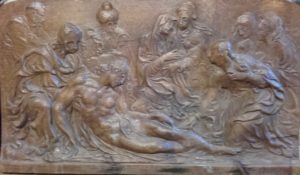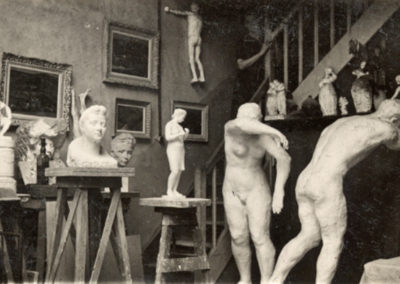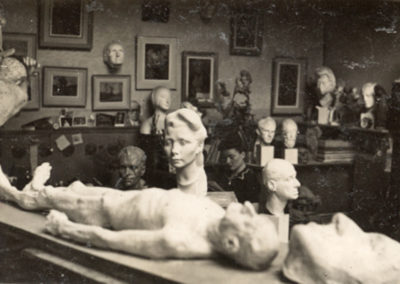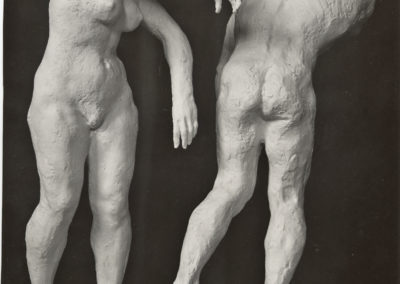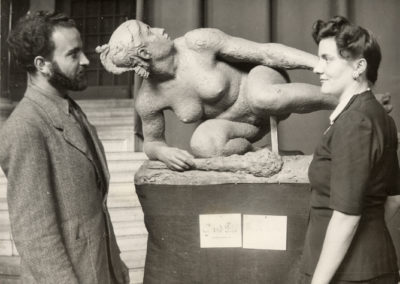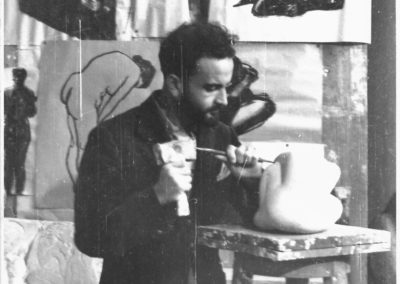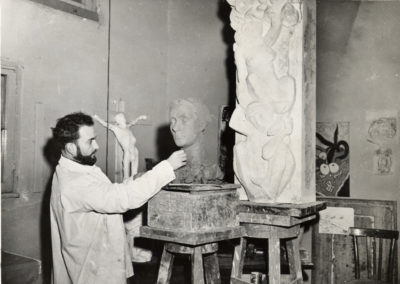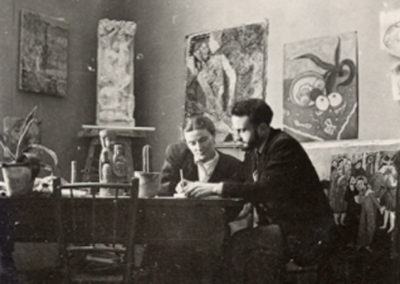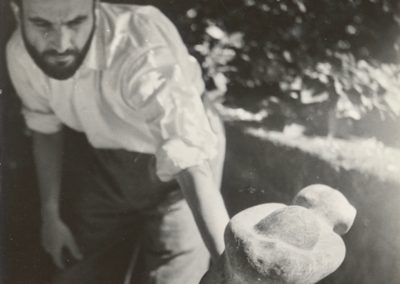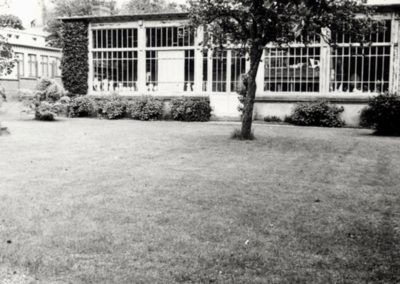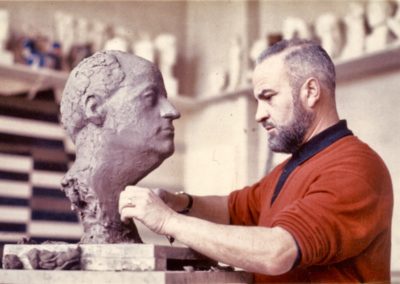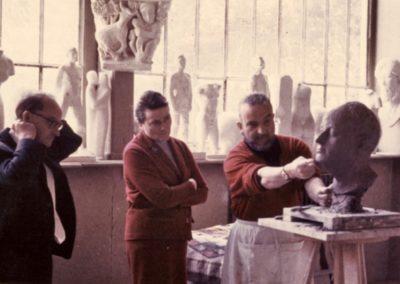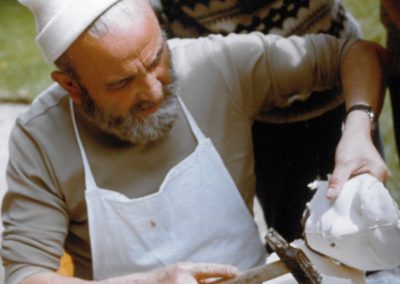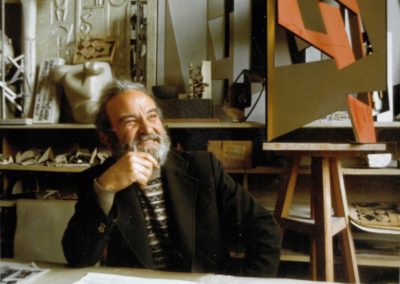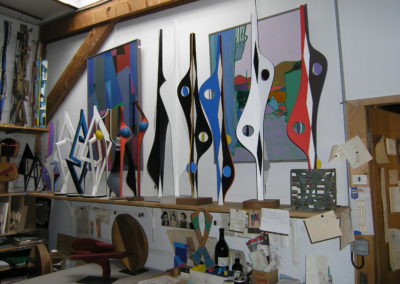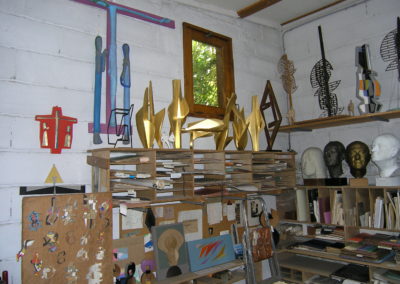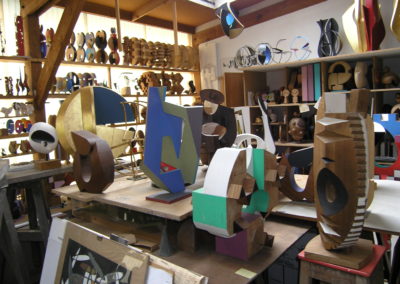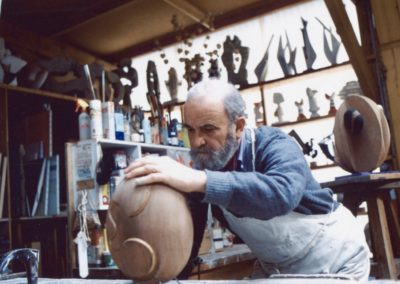The pictures and text on this website may be subject to copyright (ADAGP Paris)
Cancale
Francis Pellerin was born in Cancale on 2 April 1915.
It was in this small fishing port on the Brittany coast that he spent his childhood (his father, a fisherman, had fished the seas off Newfoundland from the tender age of ten). Educated by the Brothers of Christian Instruction of Ploërmel, Pellerin became an apprentice to the Cancale cabinet maker Henri Bagot.
Rennes
A student at the École des Beaux-Arts in Rennes, Pellerin improved his cabinet making skills before going on to train in sculpture in Albert Bourget’s atelier. He won the Prix Conté.
Paris
1935 – 1939
He continued training as a sculptor at the École des Beaux-Arts in Paris, his creativity stimulated in the atelier of Jean Boucher. On the occasion of the 1937 International Exposition, he participated in the decoration of the Brittany Pavilion. To earn a living, he worked on monumental sculptures in the ateliers of Alfred Janniot and Georges Serraz.
1938
Pellerin set up his own atelier on rue du Moulin-de-Beurre (present-day rue du Texel) in the Montparnasse district, which he kept on until 1972. He was awarded the Prix Chenavard in 1939 and received a bronze medal at the Salon des Artistes Français.
Chartres
1939 – 1941
Drafted into the air force, Pellerin was posted at the Chartres air base.
Paris
Upon his return to Paris and the École des Beaux-Arts, he studied under Marcel Gaumont and worked for such renowned sculptors as Paul Landowski, Charles Despiau and Georges Serraz. In 1942, he won the Prix Roux. The following year, at the Prix de Rome trials, he met Suzanne Deregnaucourt, his future wife and mother to his four children. She would support him tirelessly throughout his career as an artist. Francis Pellerin was awarded first prize in the sculpture category of the Prix de Rome in June 1944.
Two months later, in August 1944, he lost both his brothers. Just two days separated their deaths: one died in Cancale, the other in Saint-Malo. Grief-stricken, his father survived them for a few short weeks.
Rome
1946 – 1948
During Pellerin’s residency at the Villa Medici, contact with the other fellows encouraged a departure from academic and figurative sculpture. The work entitled La Joie marked this transition, in which his discovery of a certain quality to the light in Rome also played a part.
Rennes
1948 – 1998
Pellerin returned to Rennes towards the end of 1948 and taught at the École des Beaux-Arts until 1978 and at the École d’Architecture until 1969. Much of his time and energy during these years was devoted to the creation of monumental works, a significant number of which were publicly funded through the 1% artistique initiative established in 1951. He also completed decorative schemes for thirteen places of worship and over a hundred commissions. Twenty-four different locations in Rennes display at least one of these works.
INA video, 1964: Fernand Leréec visits the sculptor Francis Pellerin in his atelier
Francis Pellerin had his own private atelier at the École des Beaux-Arts and for a short time he used premises on rue La Fontaine in Rennes. In the attic of his country house in Ray, near Cesson-Sévigné, he experimented with works on paper in India ink and gouache. In 1963, he moved from his house on rue Victor Hugo in Rennes to one with space for an atelier on rue George Sand. He closed this atelier (his “best friend”, as he called it) a month before he died, on 30 September 1998. His funeral was held at the Church of Saint Yves. The works he completed for the church in 1956 are a testament to his unswerving dedication to his aesthetic and spiritual journey.
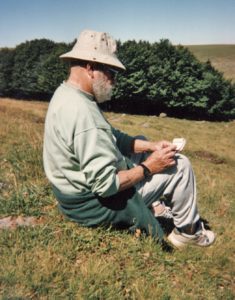
Francis Pellerin sketching in the Aubrac region
© Haude Pellerin

